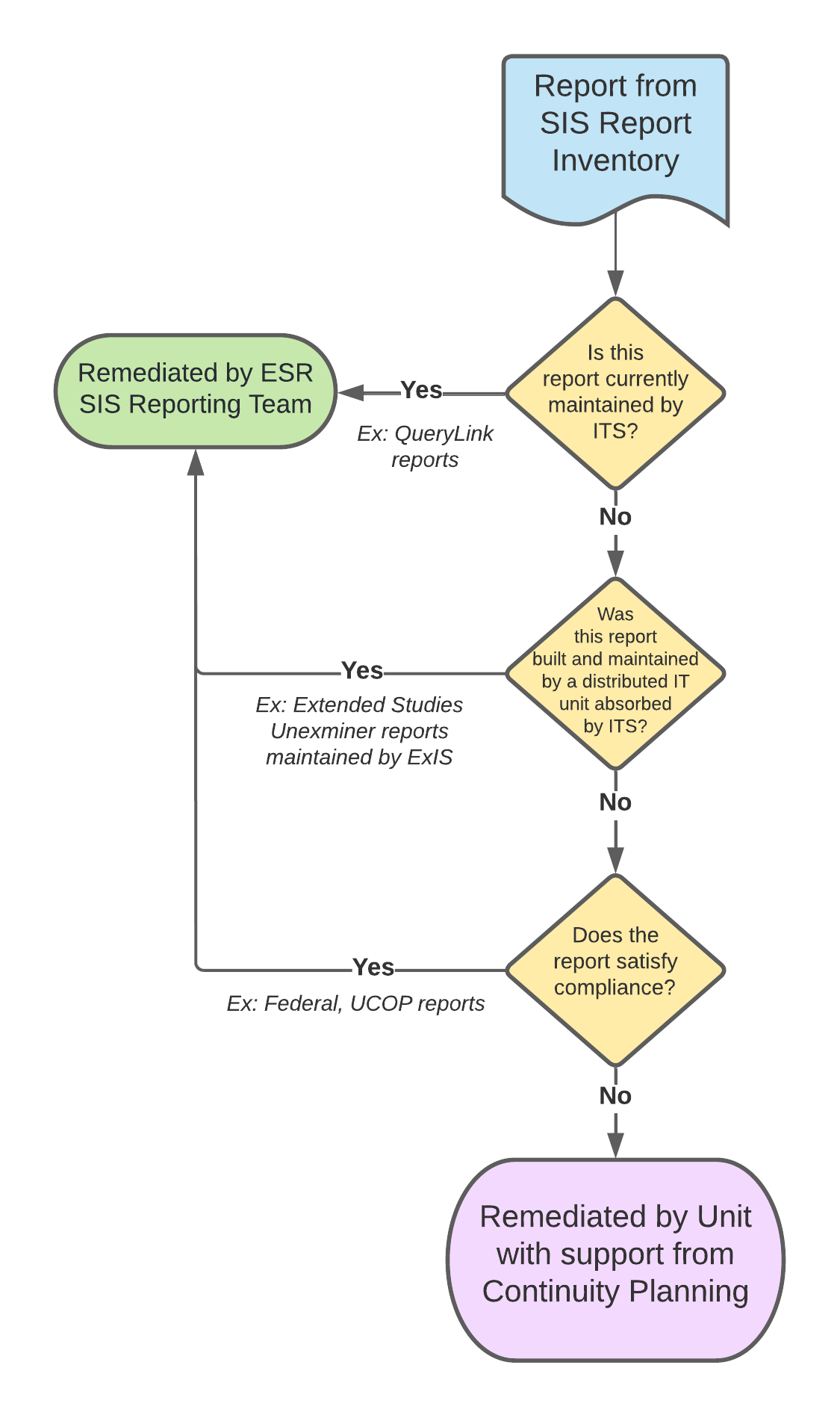SIS Project Preparation Work: Report Remediation
You may recall from a previous article, SIS Portfolio: The SIS Project and Its Supporting Work, that one of the projects currently underway to support the Student Information System (SIS) Project is the remediation of student-related reports.
When we say “remediation” in this context, we mean updating how reports obtain the data they need. As part of the ESR Program, through the activity hubs projects, we are fundamentally changing where data resides and how it is accessed. In the past, data was pulled from a data warehouse, following a data-access model that is outdated and can no longer meet our needs. Going forward, the activity hubs will hold both current and historical data to provide consolidated, centralized locations for reports to access that data. This will allow for higher quality data, as well as easier access to that data.
The SIS Project is working closely with the Activity Hubs teams in order to execute our Report Remediation Project, which is part of the preparation work currently underway for the project.
Student-Related Report Remediation
The primary goal of our Report Remediation Project is to ensure uninterrupted access to reports before, during and after the implementation of a new SIS. To do this, the project will create new versions of existing reports that depend on student data using the Student Activity Hub as the underlying source for the data, rather than directly pulling that data from other systems.
The report remediation process is much like updating the plumbing of our existing systems, so that the new plumbing sends all the data needed for student reports to the Student Activity Hub and the reports pull the data they need directly from the Activity Hub. Then, when a new SIS is implemented, the project team will only need to disconnect the pipes from the old SIS and reconnect them to the new SIS. Because this re-plumbing will happen behind the scenes, end users should see little to no changes in their reports as a new SIS is implemented.
In order to complete this re-plumbing of our systems, the project team must identify all of the student data-related reports currently in use at the university, and then understand the goals of each report and determine who will be responsible for its remediation. Once that is complete, the remediation work can begin. Because this work relies heavily on the Activity Hubs, the team must work closely with the Activity Hub project managers and change leads.
Work Completed
In January 2021, the SIS Project team sent out a request to all university stakeholders to submit student reports for inclusion in a SIS report inventory. Once the team gathered all submitted reports, they reviewed the list to flag possible duplicates, met with report owners and stakeholders to understand how each report is used, and determined what data would be needed to remediate each report. This information was gathered into the comprehensive report inventory.
An important step in the process of finalizing the report inventory was determining who would manage the remediation of each individual report on the list: the SIS Project team or the owners of the reports with support from the ESR Continuity Planning team. Whoever is responsible for a report must ensure that the data needed for that report is made available in the activity hubs and that the newly remediated report functions as stakeholders expect it to function.
Some factors considered when determining which group would be responsible include who manages the report in the current state and if the report supports federal, UCOP or other compliance requirements. Below you can see the complete decision tree the team uses to make these determinations.
Once running each report on the list through the decision tree, the team found 317 reports they would be responsible for remediating and 222 that would be the responsibility of owners of the reports (with support from Continuity Planning). An additional 16 “reports” were found not to be reports at all, but instead data integrations for which Continuity Planning will also be responsible.
Ongoing Work
With the stakeholder meetings and report inventory completed, the team has already begun remediating reports. Once a report has been remediated, the team reaches out to report stakeholders to have them test the report to ensure it works as expected and returns accurate information. Though only a few reports have been released for testing so far, the team recently onboarded a few new report developers to assist with building the remediated reports and therefore expect additional reports to be released for testing soon.
The team also continues to keep in close contact with the Activity Hubs’ project teams to work with them to bring new data sources into the Hubs, so the needed data will be available for reports as they are remediated.
As the team continues their work, they expect to uncover more reports to add to the inventory. Each report added to the inventory will go through the same process as the previous reports, including learning about the reports from stakeholders, determining who will manage each report’s remediation, building the remediated report, and then engaging with stakeholders to test each report before it is released for use by the wider university community.
Note on Project Change
The work in the Report Remediation Project has migrated over to Continuity Planning efforts as of December 2024. Read more about the change in our article, "A New Chapter for Report Remediation."
Learn more about the SIS project at esr.ucsd.edu/student.
For questions about the SIS project contact esr-student@ucsd.edu.